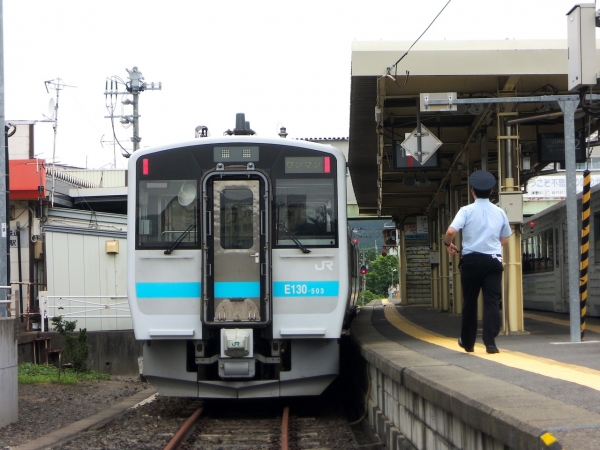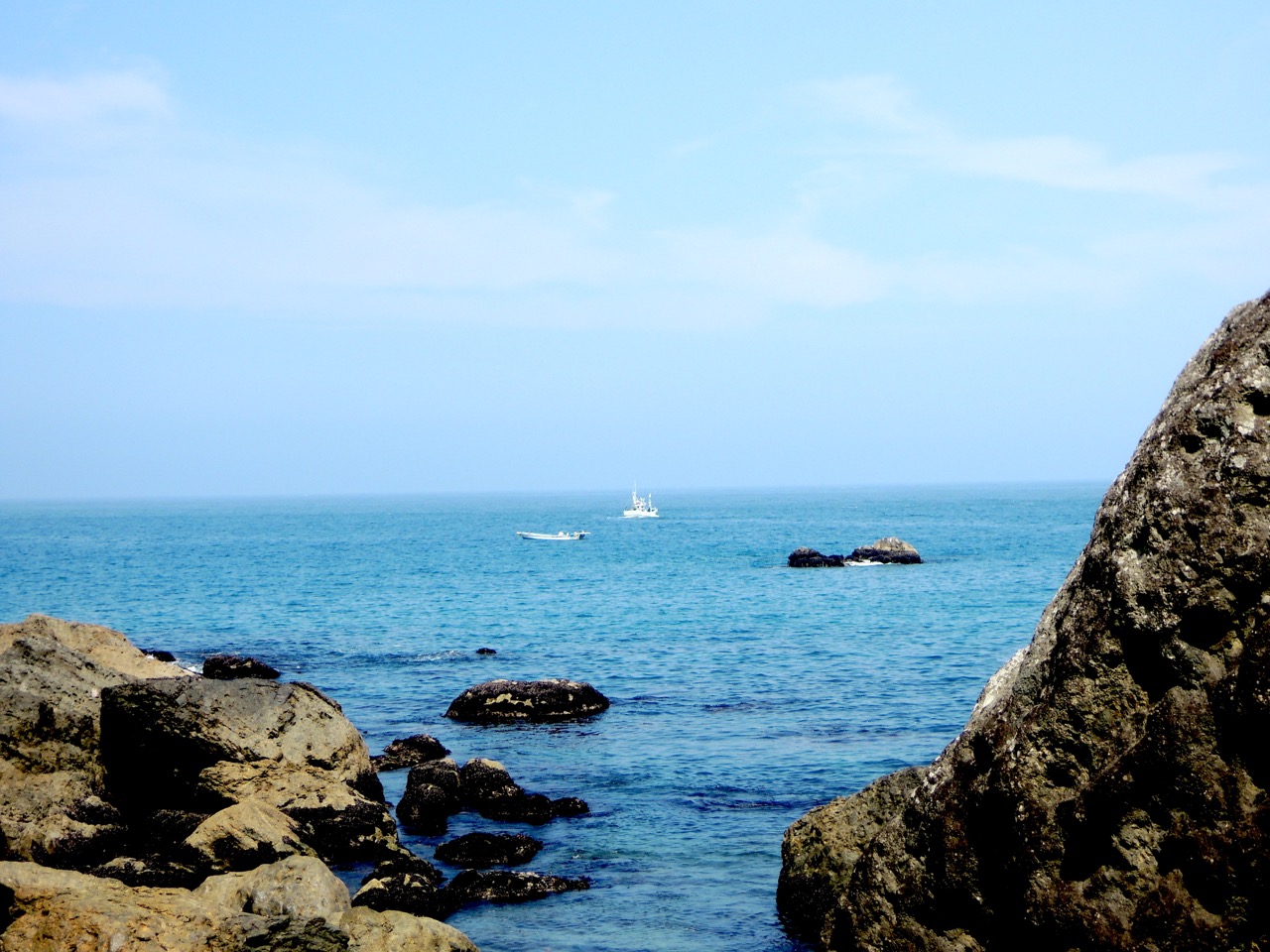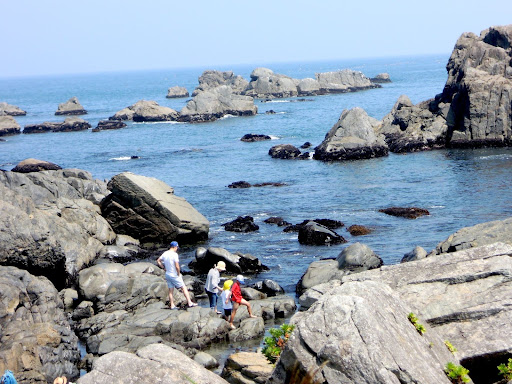Slow travels in Japan: Ruminating about life on the JR Hachinohe Line

Without a care in the world, and a Seishun-18 ticket in hand, I embarked on a trip to the Tohoku Region (東北地方) in the summer of 2020, beginning from Fukushima, to Yamagata, passing through Akita and finally to Aomori. It was the final item on my to-do list before returning home to Singapore after 2 years of living and working abroad in Japan.
I did not plan to hop on the JR Hachinohe Line, but Time and Serendipity led me to discover another unexpected scenic train route in Japan. I love how slow (train) travels give me the time and space to ruminate.
The JR Hachinohe Line departs from Hachinohe Station (八戸駅 Hachinohe-eki) in Aomori Prefecture and traverses along the Pacific Ocean coast for about 64.9 kilometres with 25 station stops in between—till it reaches Kuji Station (久慈駅 Kuji-eki) in Iwate Prefecture.
Onboard the JR Hachinohe Line

Who will ever get enough of this gorgeous coastline? (Image credit: Qiu Ting)
Towering cranes and fishing trawlers were a common sight in Hachinohe Port. As the train edged its way out of the city, and into the suburbs, I saw large rock formations along the coast with forests of pine trees punctuating the coastline. How rustic!
There were pockets of houses situated along the coast. A couple of elderly folks alighted at Oja Station (大蛇駅)—this is probably where they stay, nestled in the countryside, situated right beside the ocean.
How does it feel like living beside the ocean? How would it feel on rainy days, during typhoons, or in winter when the cold is severe and biting?
Add that to the wetness from the sea breeze lingering in the air. I could almost feel the ache in my bones.
Remembering 3/11

Unparalleled 180° views all day, every day. (Image credit: Qiu Ting)
There was a huge stretch of unobstructed view of the ocean as the train proceeded to Uge Station (有家駅). The boards displaying the station names on the platforms were illustrated with light blue outlines of seagulls.
Honestly, it was hard to imagine that Hachinohe was one of the coastal cities in the Tohoku region struck by the March 11 Great East Japan earthquake and tsunami with a magnitude of 9.1 in 2011—the strongest earthquake ever recorded in Japan.
When I first learnt about the disaster, I knew then that I couldn’t pass on a trip to Tohoku to learn more about its past and recovery efforts that were underway.
A day hike along Tanesashi Coast

Kabushima Shrine. (Image credit: Qiu Ting)
I stayed in the neighbourhood of Hon-Hachinohe, where I took a train to JR Tanesashi-Kaigan Station (種差海岸駅).
From there, I began my leisurely hike from the trailhead at Yodo-no-matsubara (淀の松原) to Kabushima Shrine (蕪島神社), well-known for its nesting population of black-tailed gulls (umineko 海猫) from March through June. They surely have an eye for choosing the fanciest spot by the Pacific Ocean!

Nature’s splendid! (Image credit: Qiu Ting)
I lost track of the amount of time spent walking along the coast, but I clearly remember stopping by and looking back every now and then to see how many miles I have clocked… and the number of photographs taken in full appreciation of how much beauty Nature has to offer. Unfiltered.
5am stroll at Tatehana Wharf Morning Market

Hello, Tatehana Wharf—Japan’s largest morning market! (Image credit: Qiu Ting)
With my alarm set at 4am the next morning, I crawled out of bed, sleepy-eyed to make my way to Tatehana Wharf, a 30-minute walk away from my hotel.
I didn’t want to miss out on the morning market proceedings, since the earliest bird catches the fattest worm. Unsurprisingly, many locals had beat me to it, as the Sunday market was already jam-packed with early risers at 5am!

Freshest local produce from Hachinohe. (Image credit: Qiu Ting)
Many vendors had already set up their stalls in front of their vehicles, displaying their produce and wares for sale. It was fun walking around to see what people were up to—slurping up bowls of ramen, buying and selling the freshest seasonal produce!

Life’s complete with a bowl of miso ramen. (Image credit: Qiu Ting)
Of course, I also got a bowl of miso ramen, although it was too early for breakfast. I found myself soaking in the vibes of the open-air morning market as the crowd ebbed and flowed.
Apart from the huge array of food stalls, there were artisans who sold crafts like tatami placemats that I knew I had to get my hands on!
After circling the morning market from one end to another, I decided to grab a cup of hot cocoa and a bottle of blueberry juice before making myself comfortable on a makeshift chair under a food tent... to people-watch. Some vendors started playing music on their stereos, livening up the atmosphere.
I saw the snaking queue for soup dumplings (xiaolongbao, 小笼包) grow longer with every passing minute. Are they really that good? Should I join the queue later?
Mere minutes later, I succumbed and ended up with a tray of deliciously juicy goblets of stuffed meat and soup wrapped tenderly with flour.
In retrospect, what I absolutely love about marketplaces and bazaars is the congregation of different people and personalities, selling items unique to their brands, and the relationships that sprout from them gathering in one shared space.
Hachinohe’s ongoing restoration after 3/11

Exploring Mutsu-minato. (image credit: Qiu Ting)
After spending some time at Tatehana Wharf, I explored the neighbourhood of Mutsu-minato, where I stumbled upon the Hachinohe City Minato Experience & Learning Center (八戸市みなと体験学習館). There, I learnt about Hachinohe’s rich history and how natural disasters have affected the community.
As a city situated right beside the Pacific Ocean, Hachinohe has been threatened by tsunamis on several occasions. The city's port facilities, including fishery companies, quays and landing amenities were damaged by the giant tsunami triggered by the 3/11 earthquake. There were photographs of the aftermath displayed in the museum, showing the severity and scale of destruction.
But what I can clearly remember till today is the volume of practical tips offered to educate and prepare citizens for evacuations and future emergency situations, using daily supplies as alternatives to provide aid in the event of scarce medical supplies.
For instance, newspapers were used as bandages or blankets to generate warmth when it is cold. Plastic wraps were also used as plasters and to insulate items or prevent infections.
It is deeply humbling to learn that the everyday items that we take for granted, dispose of when they are seemingly useless can actually be repurposed in times of crisis to bring comfort to people in need of them.

We create Community. (Image credit: Qiu Ting)
And as I explored the nooks and crannies of this city, I can see why Hachinohe’s ongoing restoration is the fastest. Most importantly, I am heartened to have bore witness to the resilience and profound strength in the Japanese for embracing and overcoming adversity in whatever that comes their way.
Yodo-no-matsubara (淀の松原)
Address: Akako Samemachi, Hachinohe, Aomori 031-0841
Nearest station: Tanesashi Kaigan Station (種差海岸駅)
Access: 10-minute walk from Tanesashi Kaigan Station on the JR Hachinohe Line or a 5-minute walk from Tanesashi Kaigan Information Center
Opening hours: 24 hours
Kabushima Shrine (蕪島神社)
Address: Same-56-2 Samemachi, Hachinohe, Aomori
Nearest station: Same Station (鮫駅)
Access: 15-minute walk from Same Station
Opening hours: 09:00–16:00 (Open daily)
Tel: +81 178-34-2730
Tatehana Wharf Morning Market (館鼻岸壁朝市)
Address: Tatehana Wharf, Shinminato, 3-chome, Hachinohe, Aomori
Nearest station: Mutsu-Minato Station (陸奥湊駅)
Access: 10 minute walk from Mutsu-Minato Station
Opening hours: 05:00–09:00 (Sundays only, mid-March to December)
Tel: +81 178-24-4861
Hachinohe City Minato Experience & Learning Center (八戸市みなと体験学習館・みなっ知)
Address: 67-7 Tatehana, Minatomachi, Hachinohe, Aomori 031-0812
Nearest station: Mutsu-Minato Station (陸奥湊駅)
Access: 15-minute walk from Mutsu-Minato Station
Opening hours: 09:00–19:00 (Hours may vary; for more details, visit their website)
Tel: +81 178-38-0385
Header image credit: Qiu Ting






